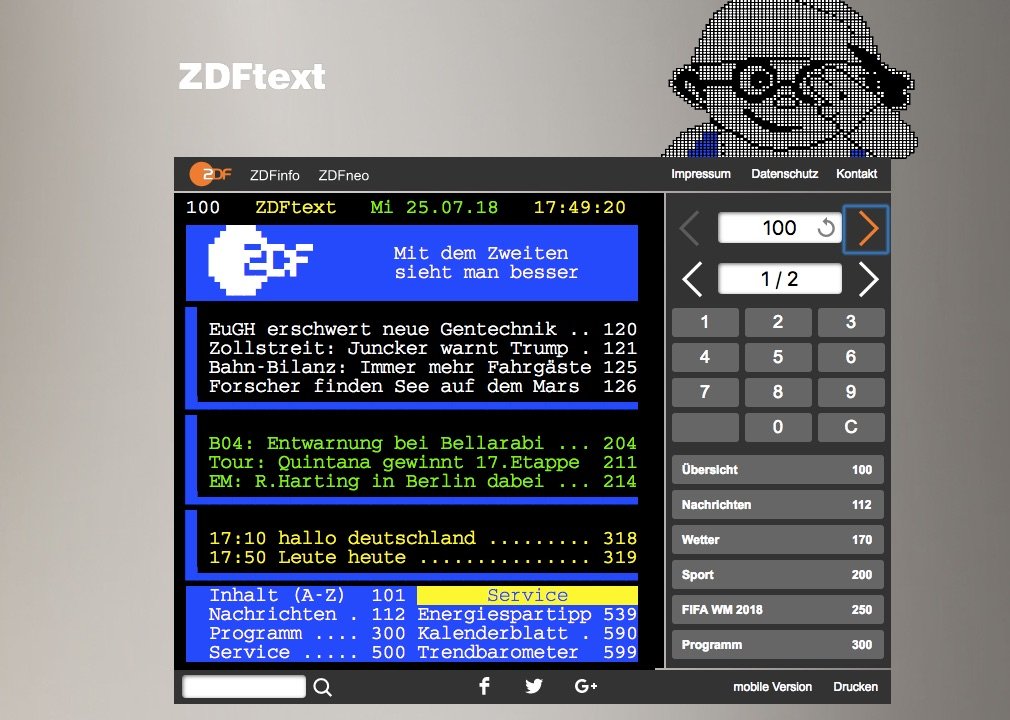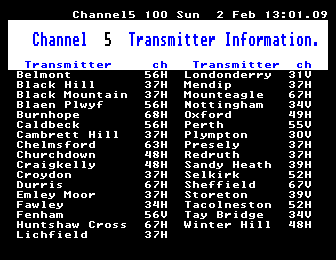

The top few television lines of each television field are not used for carrying picture information as such, but for transmitter control data, specialised waveforms for checking system parameters (group delay, frequency responce etc) and for other purposes.
Teletext net 5 serial#
The file format can be sent from a computer via the serial port to one of these Viewdata Terminals and displayed similarly to the images below.


The files correspond to the standard memory format as used in a SAA5050, or alternatively, Tandata / Viewdata formats are available, once used by a Prestel service in the U.K. Individual pages or a whole EPROMs worth can be obtained from ZL1VFO. This beacon presently has 64 pages and some examples converted to GIF images can be found throughout this page. Both branches operate TV repeaters as well as standard VHF and UHF voice repeaters which transmit a beacon in the form of a 'Test Pattern' based on a design by Trevor Brown G8CJS described in a project in the ATV Compendium by Mike Wooding G6IQM. ZL1BQ and ZL1UX are the branch callsigns for the Ak VHF Group and the Hamilton Amateur Radio Club.

It is not surprising then that a dedicated set of integrated circuits have been made available to satisfy the considerable demand, and it is these devices upon which this design is based. Similar services are also available over much of Australia, Europe and many other countries throughout the world. Teletext has been around in ZL for some years now, transmitted by the state broadcaster, TVNZ, and the privately owned Canwest company TV3. Aside from a page of simple text, various images can be broadcast, by means of 'drawing' using selected block graphic characters.
Teletext net 5 generator#
Various ATV Groups use such designs, which are based on the BATC's Teletext Pattern Generator as described in The ATV Compendium. They are quite useful where the ability to place a page of text on screen is required.
Teletext net 5 software#
in Italy, but you needed some special decoding software for that to really work, and it was also one-way.Teletext ICs can and are used in a number of Amateur TV beacons, home test patterns, and call-sign generators. That being said, there were a few services that allowed downloading actual data files over Teletext e.g. Teletext is interesting in that its burst data rate can be as high as 7 Mbps, but it only has a little window of time to transmit -basically just a few scanlines every frame- so the total data throughput is only really in the 1 KB/sec ballpark. They made "browsing" other pages quicker, yes, but very few -if any- were smart enough to identify multi-part/variable content.
Teletext net 5 full#
Not even TVs with a full 999-page buffer could really work around that. you stumbled on part 5/8, you had to wait until 6/8, 7/8 and 8/8 passed until it went back to 1/8 again. What was super-annoying were multi-part pages, as you had to wait a fixed length of time for the next part to be fetched, and you couldn't really land on any part you wanted. Also, pages with emergency numbers or paid ads appeared much more frequently in the stream and thus had a faster response time *wink* *contract* 777 or 999 in Italy) were updated much more frequently and provided real-time subtitles/closed captioning. page 100 is almost always the index) are are repeated more often in the stream. Some pages are considered "special" (e.g. The "interactivity" is basically just waiting for the page you requested to be fetched, as every available page is essentially "carouselled" through the airwaves.


 0 kommentar(er)
0 kommentar(er)
